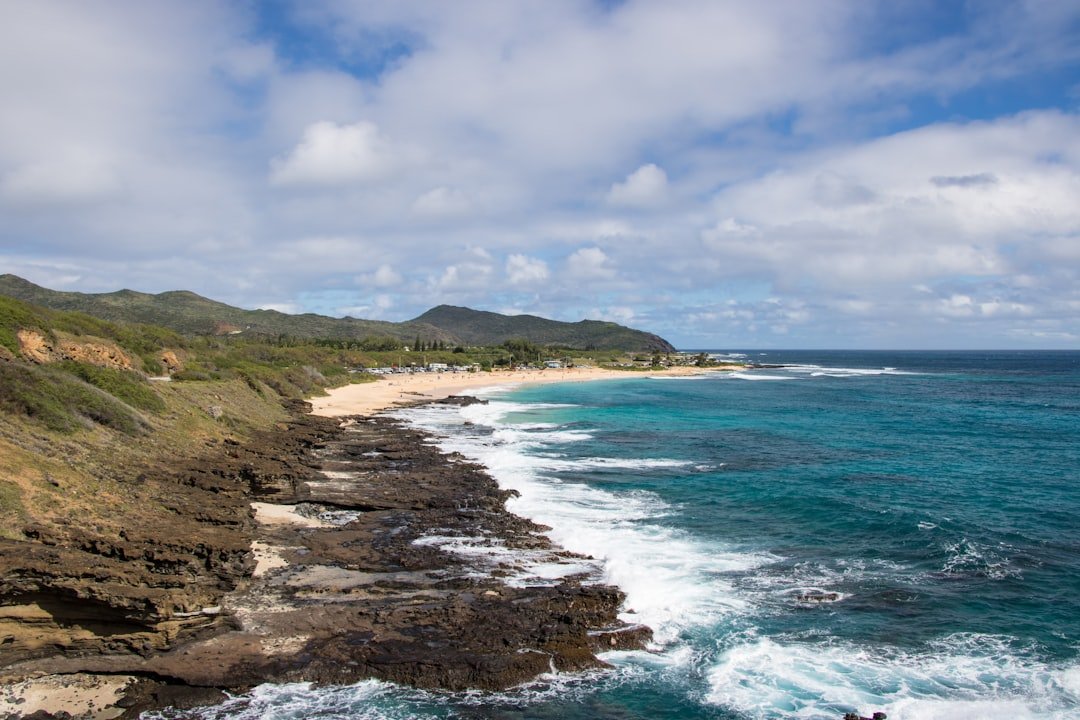Cabo San Lucas, located at the southern tip of the Baja California Peninsula in Mexico, is renowned for its stunning beaches, vibrant nightlife, and picturesque landscapes. The climate in this region is classified as a desert climate, characterized by warm temperatures and low annual rainfall. However, the interplay of various climatic factors results in unique weather patterns that can significantly influence the experience of both residents and visitors.
The average temperature in Cabo San Lucas hovers around 25°C (77°F) throughout the year, with summer months often reaching highs of 35°C (95°F). While the dry season typically spans from November to May, the summer months from June to October bring increased humidity and occasional tropical storms. The humidity levels in Cabo San Lucas can vary dramatically depending on the time of year.
During the summer months, humidity can rise significantly, creating a muggy atmosphere that contrasts sharply with the dry heat experienced during the winter. This seasonal fluctuation is essential for understanding how the climate affects daily life and tourism in the area. As Cabo San Lucas continues to grow as a popular tourist destination, understanding its climate, particularly humidity levels, becomes increasingly important for both visitors and local businesses.
Historical Humidity Trends in Cabo San Lucas
Seasonal Variations in Humidity
In contrast, during the winter months, humidity levels drop significantly, often falling below 50%, creating a more pleasant environment for outdoor activities.
The Impact of Climate Change
Historical trends also reveal that Cabo San Lucas is not immune to the effects of climate change. Over the past few decades, there has been a noticeable increase in average temperatures and changes in precipitation patterns. These shifts have led to variations in humidity levels that can impact local ecosystems and human activities.
Understanding Historical Trends for Future Preparedness
For instance, the increased frequency of tropical storms during the hurricane season has resulted in sudden spikes in humidity, affecting both agriculture and tourism. Understanding these historical trends is crucial for predicting future climate scenarios and preparing for potential challenges.
Factors Affecting Humidity Levels in Cabo San Lucas

Several factors contribute to the humidity levels experienced in Cabo San Lucas. One of the primary influences is its geographical location along the Pacific Ocean. The ocean plays a significant role in regulating temperature and humidity through evaporation and condensation processes.
Warm ocean currents can lead to increased moisture in the air, particularly during the summer months when sea surface temperatures are at their highest. Additionally, coastal winds can carry humid air inland, further elevating humidity levels in certain areas. Another critical factor is the topography of the region.
The Sierra de la Laguna mountain range lies to the northeast of Cabo San Lucas, creating a rain shadow effect that influences local weather patterns. While the coastal areas may experience high humidity due to oceanic influences, the inland regions tend to be drier. This contrast can create microclimates within relatively short distances, affecting everything from agriculture to tourism activities.
Furthermore, urban development and land use changes can also impact local humidity levels by altering natural vegetation and water drainage patterns.
Humidity Forecast for 2025 in Cabo San Lucas
Looking ahead to 2025, climate models suggest that Cabo San Lucas may experience continued fluctuations in humidity levels due to ongoing climate change. Projections indicate that average temperatures will likely rise, which could lead to increased evaporation rates and subsequently higher humidity levels during the summer months. This trend may be exacerbated by more frequent and intense tropical storms as global warming continues to influence weather patterns across the globe.
Moreover, local initiatives aimed at sustainability and environmental conservation may play a role in shaping future humidity trends. Efforts to preserve natural habitats and promote responsible land use could help mitigate some of the adverse effects of urbanization on local climate conditions. However, without significant global action on climate change, Cabo San Lucas may face challenges related to increased humidity and its associated impacts on health, agriculture, and tourism.
Impact of Humidity on Tourism and Outdoor Activities
The impact of humidity on tourism in Cabo San Lucas cannot be overstated. High humidity levels during the summer months can deter some visitors who prefer milder weather conditions for outdoor activities such as hiking, golfing, or beach lounging. Tourists may find themselves seeking refuge indoors or opting for evening excursions when temperatures are cooler and humidity levels are more tolerable.
This shift can affect local businesses that rely heavily on daytime tourism. Conversely, lower humidity levels during the winter months attract a significant influx of tourists seeking sun-soaked vacations away from colder climates. The pleasant weather conditions create ideal circumstances for outdoor activities such as whale watching, snorkeling, and exploring natural parks.
Understanding these dynamics is crucial for local businesses as they plan marketing strategies and service offerings throughout the year. By anticipating changes in tourist behavior based on humidity trends, businesses can better cater to their clientele’s needs.
Tips for Dealing with High Humidity in Cabo San Lucas

For those visiting Cabo San Lucas during peak humidity months, there are several strategies to cope with the discomfort that high moisture levels can bring. Staying hydrated is paramount; drinking plenty of water helps regulate body temperature and prevents dehydration. Tourists should also consider wearing lightweight, breathable clothing made from natural fibers like cotton or linen to facilitate airflow and wick moisture away from the skin.
Timing outdoor activities wisely can also make a significant difference in comfort levels. Early morning or late afternoon excursions are often more enjoyable when temperatures are cooler and humidity is lower. Additionally, seeking shaded areas or air-conditioned environments during peak heat hours can provide much-needed relief from oppressive conditions.
For those engaging in physical activities such as hiking or sports, taking frequent breaks and listening to one’s body is essential to avoid heat-related illnesses.
Importance of Monitoring Humidity Levels for Health and Safety
Monitoring humidity levels is crucial not only for comfort but also for health and safety reasons. High humidity can exacerbate certain health conditions such as asthma or respiratory issues by increasing allergens like mold and dust mites. Individuals with pre-existing health concerns should be particularly vigilant about their environment during periods of elevated humidity.
Moreover, heat-related illnesses such as heat exhaustion or heat stroke become more prevalent when high temperatures combine with high humidity. For tourists and residents alike, staying informed about current weather conditions can help mitigate risks associated with high humidity. Local weather services provide valuable information regarding temperature forecasts and humidity levels, allowing individuals to plan their activities accordingly.
Additionally, public health campaigns aimed at educating residents about recognizing symptoms of heat-related illnesses can play a vital role in ensuring community safety during peak summer months.
The Future of Humidity in Cabo San Lucas
As Cabo San Lucas continues to evolve as a premier tourist destination, understanding its climatic nuances—particularly humidity—will be essential for sustainable development and community well-being. The interplay between natural factors and human activity will shape future weather patterns and their implications for health, tourism, and local ecosystems. By prioritizing environmental conservation efforts and promoting awareness about climate change impacts, stakeholders can work together to navigate the challenges posed by rising temperatures and fluctuating humidity levels.
In summary, while Cabo San Lucas boasts a beautiful climate that attracts millions of visitors each year, it is essential to remain cognizant of how changing weather patterns may affect this idyllic destination’s future. Through proactive measures and informed decision-making, both residents and tourists can continue to enjoy all that Cabo San Lucas has to offer while adapting to its evolving climate landscape.
FAQs
What is the average humidity in Cabo San Lucas?
The average humidity in Cabo San Lucas ranges from 60% to 70% throughout the year.
When is the most humid time of year in Cabo San Lucas?
The most humid time of year in Cabo San Lucas is during the summer months, particularly from July to September.
Does Cabo San Lucas experience high levels of humidity?
Cabo San Lucas does experience relatively high levels of humidity, especially during the summer months, but it is generally lower compared to other tropical destinations.
How does the humidity in Cabo San Lucas affect the weather?
The high humidity in Cabo San Lucas can contribute to the warm and tropical climate, with occasional rain showers and thunderstorms during the summer months.
What activities are affected by the humidity in Cabo San Lucas?
The high humidity in Cabo San Lucas can make outdoor activities more challenging, particularly during the summer months when the humidity levels are at their peak. Visitors may need to take extra precautions to stay hydrated and cool.



